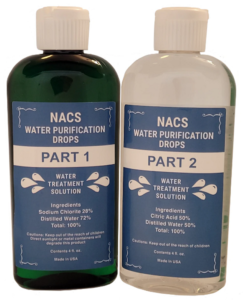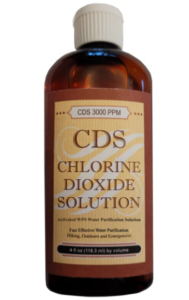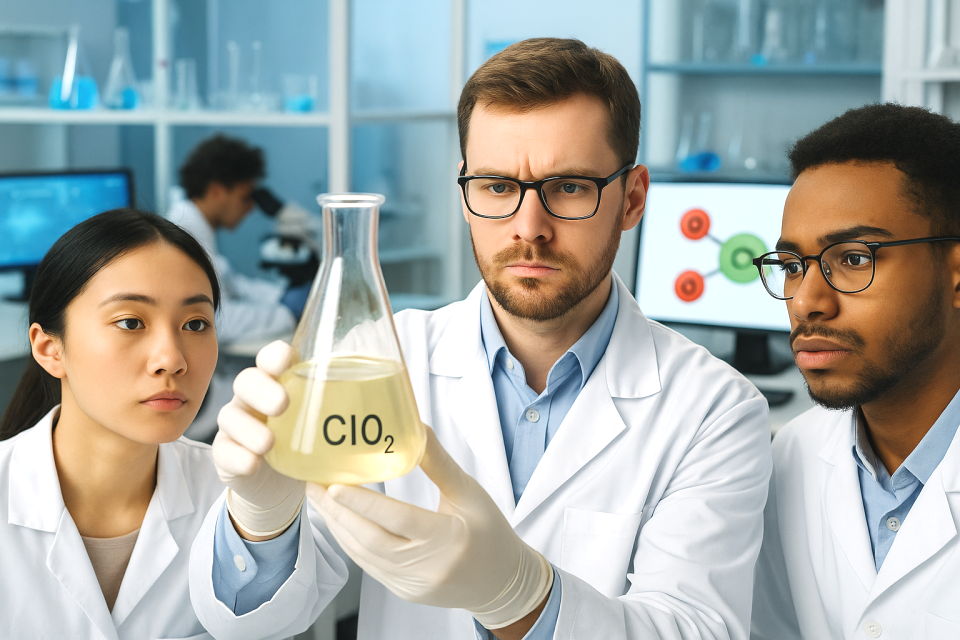In the wake of global health challenges posed by viral infections, ranging from seasonal influenza to emerging pandemics, scientists and healthcare practitioners have been exploring novel solutions that extend beyond traditional antiviral medications. Among the most controversial yet promising candidates is chlorine dioxide (ClO₂), a well-known disinfectant that is now being examined for its potential internal health applications, particularly in antiviral therapy.
While mainstream medicine has been slow to adopt this approach, a growing body of emerging research and field reports suggests that chlorine dioxide may hold significant promise in neutralizing viruses without harming the body’s healthy cells.
Chlorine Dioxide is More Than Just a Disinfectant
Chlorine dioxide is not new. It has been used safely for over 80 years in municipal water treatment systems around the world. It is recognized for its ability to destroy harmful microorganisms, including bacteria, fungi, and viruses, through oxidation, a process that disrupts the integrity of pathogens without generating toxic byproducts.
Unlike chlorine bleach (sodium hypochlorite), chlorine dioxide does not form carcinogenic trihalomethanes. It has a unique molecular structure that allows it to target pathogens while leaving healthy tissue and beneficial gut flora intact. This selective oxidant behavior is what has fueled speculation about its internal antiviral potential.
Emerging Scientific Support for Antiviral Action
Several recent peer-reviewed studies and scientific reviews have begun to illuminate chlorine dioxide’s potential as an antiviral agent:
- Ogata & Shibata (2008) demonstrated that chlorine dioxide gas can effectively inactivate airborne influenza viruses. This supports the idea that ClO₂ can neutralize viruses by oxidizing viral proteins critical for infectivity.
- A 2020 study by the University of Almería observed that aqueous chlorine dioxide at safe concentrations (below 1 mg/L) exhibited no cytotoxicity in human cells while maintaining its antimicrobial properties. This is crucial for any compound considered for internal therapeutic use.
- In clinical environments, Andreas Kalcker and colleagues have reported successful case studies where patients with viral infections, ranging from COVID-19 to hepatitis, showed rapid improvement using low-dose chlorine dioxide protocols under medical supervision.
- The Journal of Bacteriology & Mycology published research showing chlorine dioxide’s efficacy against methicillin-resistant Staphylococcus aureus (MRSA), suggesting its potential against even the most resistant pathogens, including certain viruses that mutate quickly.

How It Works: A Different Mechanism Than Drugs
Most antiviral drugs work by attempting to block replication or entry of the virus into host cells. Chlorine dioxide works differently. It oxidizes viral components, particularly the sulfur-rich amino acids and fatty acids in the viral envelope and proteins, which disrupts their ability to infect cells.
The antiviral action of chlorine dioxide occurs without introducing synthetic chemical residues, and unlike antibiotics or antivirals, it does not contribute to the development of resistance.
Real-World Reports and Anecdotal Evidence
Outside of laboratory studies, thousands of anecdotal reports have surfaced from patients, doctors, and alternative health practitioners worldwide, describing remarkable recoveries after using chlorine dioxide protocols, particularly when traditional treatments failed or were unavailable.
These case studies include individuals suffering from:
- Chronic viral infections (HIV, hepatitis C)
- Acute respiratory illnesses
- Epstein-Barr virus
- COVID-19
While anecdotal, these widespread reports underscore the urgent need for controlled, independent clinical trials funded by sources other than pharmaceutical interests to further explore these claims.
Safety and Protocols
When used responsibly at therapeutic levels, chlorine dioxide has demonstrated a favorable safety profile. Most health practitioners who use it internally recommend dilute doses in water, following established guidelines, such as the CDS protocols popularized by Jim Humble and refined by scientists like Andreas Kalcker.
In contrast to misinformed media reports equating chlorine dioxide with household bleach, properly activated ClO₂ is chemically and functionally distinct and has been shown to be non-toxic at controlled doses.

Why It Matters Now
In a world plagued by mutating viruses and overburdened healthcare systems, the potential of chlorine dioxide as an inexpensive, shelf-stable, and scalable antiviral deserves deeper scientific attention. Its affordability and broad-spectrum action make it an ideal candidate for use in low-resource settings, where access to cutting-edge pharmaceuticals is limited.
Furthermore, with antibiotic and antiviral resistance on the rise, exploring non-traditional solutions, such as chlorine dioxide, could open doors to a new class of therapeutic agents.
The Time Has Come for an Honest Scientific Inquiry
Chlorine dioxide’s long-standing use in water purification and environmental sanitization, coupled with emerging data on its internal antiviral action, warrants serious scientific investigation. Dismissing it outright due to controversy or misinformation undermines the spirit of scientific progress.
It’s time for open-minded, rigorous research to determine how, and how well, chlorine dioxide can serve as a safe and effective antiviral tool in our ongoing quest for global health security.
Disclaimer: This article does not constitute medical advice. Always consult with a qualified health professional before beginning any new treatment or supplement.


Leave a Reply